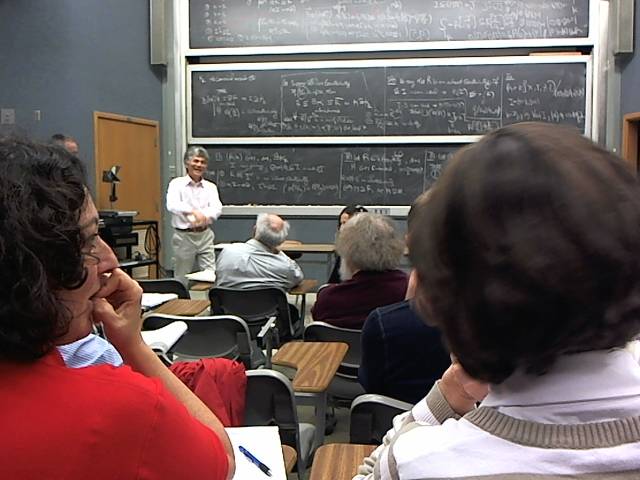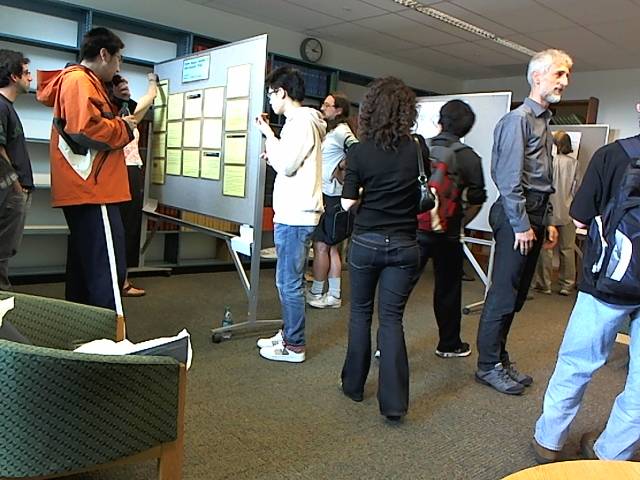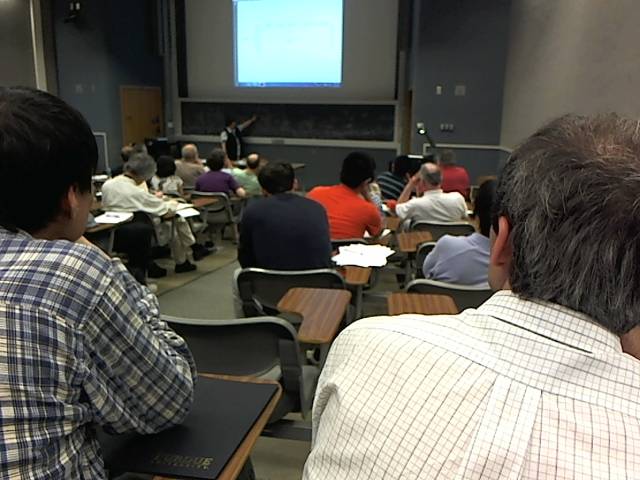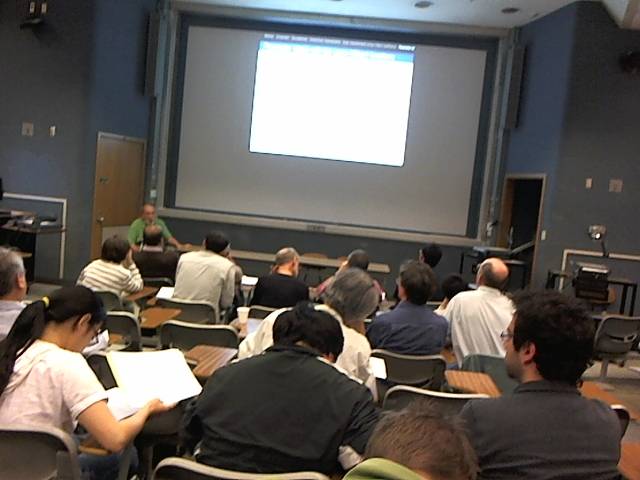Midwest Commutative Algebra and Geometry Conference, Purdue 2011
In May of 2011, Purdue hosted the 2011 Midwest Commutative Algebra and Geometry Conference. For five days, mathematicians took control of an auditorium and delivered lectures concerning new research ideas and recently published papers. The conference was open to any interested party, and so an undergraduate math major like myself was able to slip in unnoticed and eavesdrop. What follows are my impressions and observations of the conference.
I should begin by confessing that the overwhelming majority of the material covered at the conference was impenetrable to me. There were many times where I followed a line of argument for a few steps, only to be rendered thoroughly confused by a slew of unfamiliar notation and terminology. Well, this is mathematics after all. Unlike some areas of collegiate study (I will resist the temptation to name them), the concepts are more than academic formalizations of common sense ideas, and being unprepared can only result in total confusion.
That said, what exactly did speakers at the conference talk about? A decent way to describe a branch of mathematics is to mention what kinds of objects it studies. Commutative algebra studies rings, modules, ideals, free resolutions, homologies and other things. If you're curious about what these words mean, Wikipedia is a good place to start. Seeing the word "geometry" in the title of the conference, you'd think there would be lots of pictures drawn on the blackboard. And you would be wrong. I saw a total of two drawings in all the talks I attended. But there are geometric notions hidden behind the abstract symbolism that actually comprised blackboard content. Or so it is claimed.
The first talk, titled "Duality, Residues, Fundamental Class" was given by Joseph Lipman of Purdue. Lipman has apparently been working for many years to generalize something called the Residue Theorem. He also mentioned that some of the relevant proofs were not particularly illuminating. This is an idea I'm familiar with. Sometimes you can follow every step of a proof, but fail to see why the theorem "really" holds. Sometimes this is just a failure on the part of the reader. After all, there is no rule which says mathematics must be understandable in an intuitive way, or satisfy some expectation of how things *ought* to work. But when it is possible, intuitive understanding is deeply satisfying and ultimately more useful than rote acceptance of a proposition. I think this is the sort of thing that Lipman had in mind.
Lipman's was probably the most incomprehensible talk I attended. The material was extremely abstract, and drew heavily on the notion of "derived categories" which is completely outside my field of vision. But there were bits and pieces that I could still appreciate. For instance, Lipman emphasized changing perspectives--from local to global, from category descriptions to topological descriptions.
Next up was a talk given by Robin Hartshorne. Hartshorne is the author of a very popular text on algebraic geometry, and so I have heard his name many times before the conference. I was surprised to find myself experiencing something like rock star reverence for this man with renowned intellect and unusual hair. He delivered an excellent lecture, developing his arguments on the blackboard as though he were teaching a class. Of course I was unfamiliar with much of the terminology, but bits and pieces made sense. Here is the abstract for the talk:
"Abstract: (joint work with Marta Casanellas and with the assistance of F.-O. Schreyer and F. Geiss) Many years ago Bernd Ulrich observed that the number of generators of a Cohen-Macaulay module over a local ring is bounded by the product of the rank of the module and the multiplicity of the ring. He initiated the study of modules for which this maximum occurs, now called Ulrich modules. The corresponding notion in algebraic geometry is that of an Ulrich bundle on a variety in projective space, meaning that the corresponding module over the local ring of the cone over that variety is an Ulrich module. In this paper we prove the existence of stable (hence indecomposable) Ulrich bundles of all ranks on cubic surfaces in P3 and on general cubic threefolds in P4. For bundles on the cubic surface, this requires a careful analysis of the possible curves on the surface that can be the first Chern class of an Ulrich bundle; for bundles on the cubic threefold, we need certain curves of degrees 5 and 12 whose existence (up to now) is only known via computations on Macaulay2 provided by Schreyer and Geiss."
This sort of description is tantalizing because I know what most of the words mean from research, and I feel like it would only take a little more study to comprehend. Macaulay2 incidentally is a program I'm familiar with, and it is pretty cool knowing professionals use the same software. Hartshorne also mentioned the existence of a "dictionary" between geometry and algebra. This is a concept I've seen before--the associations between prime ideals and irreducible varieties, between the elimination of variables and the projection of varieties. Geometry is present in this stuff, even if it isn't immediately obvious.
Irena Peeva of Cornell gave an interesting talk about infinite free resolutions. She explained that much less is known about infinite free resolutions than finite ones, and advised younger audience members that this is a good area for new research. Peeva discussed asymptotic properties of minimal free resolutions--in other words, properties that are true for all of the maps after a sufficiently large truncation.
Overall I found the conference bewildering but enjoyable. In addition to seeing a bunch of high level math, I also witnessed two people lean back too far in their seats, breaking their chairs. Also an audience member fell asleep and snored loudly throughout a talk, and a tornado siren interrupted one of the presentations. I would recommend the experience to undergrads who are either curious, highly gifted or masochistic.
Here are some pictures I took of the conference:
Shiro Goto: "Almost Gorenstein Rings"
Poster presentations
Irena Peeva: "Resolutions over Complete Intersections"
Wolmer Vasconcelos: "The Homology of Parameter Ideals"





